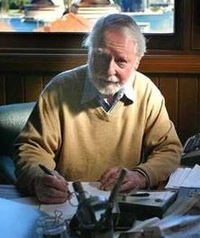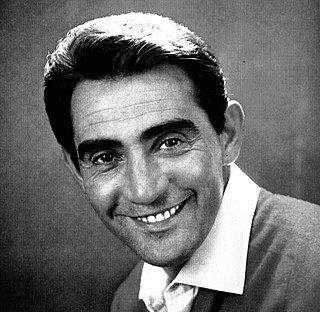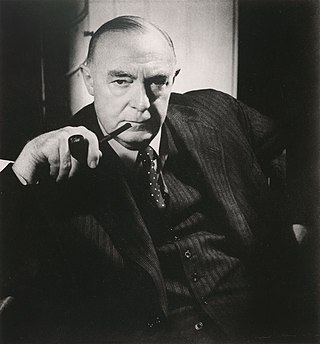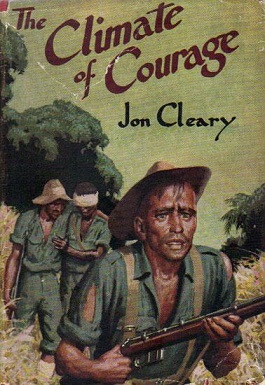
Be Cool is a 2005 American crime comedy film based on Elmore Leonard's 1999 novel of the same name and the sequel to Leonard's 1990 novel Get Shorty about mobster Chili Palmer's entrance into the music industry. This was Robert Pastorelli's final film, as he died one year before its theatrical release.

They're a Weird Mob is a 1966 Australian comedy film based on the 1957 novel of the same name by John O'Grady under the pen name "Nino Culotta", the name of the main character of the book. It was the penultimate collaboration of the British filmmakers Michael Powell and Emeric Pressburger.

John Meillon,, was an Australian character actor known for dramatic as well as comedy roles. He portrayed Walter Reilly in the films Crocodile Dundee and Crocodile Dundee II. He also voiced advertisements for Victoria Bitter beer. He appeared in several Australian New Wave films including Wake in Fright and The Cars That Ate Paris.

Punchbowl is a suburb in the south west of Sydney, 17 kilometres (11 mi) west of the Sydney central business district, in the local government area of the City of Canterbury-Bankstown, in the state of New South Wales, Australia. At the 2016 census, Punchbowl had a population of 20,236.

Jon Stephen Cleary was an Australian writer and novelist. He wrote numerous books, including The Sundowners (1951), a portrait of a rural family in the 1920s as they move from one job to the next, and The High Commissioner (1966), the first of a long series of popular detective fiction works featuring Sydney Police Inspector Scobie Malone. A number of Cleary's works have been the subject of film and television adaptations.
William Edwin Pidgeon, aka Bill Pidgeon and Wep, (1909–1981) was an Australian painter who won the Archibald Prize three times. After his death, cartoonist and journalist Les Tanner described him: "He was everything from serious draftsman, brilliant cartoonist, social observer, splittingly funny illustrator to multiple Archibald prizewinner.

Walter Annicchiarico, known as Walter Chiari, was an Italian stage and screen actor, mostly in comedy roles.
John Patrick O'Grady was an Australian writer. His works include the comic novel They're a Weird Mob (1957) using the pen name Nino Culotta and the poem The Integrated Adjective, sometimes known as Tumba-bloody-rumba.
Jacinta Tynan is an Australian news presenter and journalist.

The Songs of a Sentimental Bloke is a verse novel by Australian poet and journalist C. J. Dennis. Portions of the work appeared in The Bulletin between 1909 and 1915, the year the verse novel was completed and published by Angus & Robertson. Written in the rough and comical Australian slang that was Dennis' signature style, the work became immensely popular in Australia, selling over 60,000 copies in nine editions within the first year of publication.
Science fiction television has been produced in Australia since the 1960s, as a homegrown response to imported overseas US and British shows.

The Sundowners is a 1952 novel by Australian writer Jon Cleary.

Sydney George Ure Smith OBE was an Australian arts publisher, artist and promoter who "did more than any other Australian to publicize Australian art at home and overseas".
Desmond M. O'Grady was an Australian journalist, author, and playwright who resided and worked in Rome from 1962.

Cop this Lot (1960) is a popular Australian comic novel written by John O'Grady under the pen name "Nino Culotta", the name of the main character of the book. It is a sequel to the even more popular They're a Weird Mob.
The Mercury Theatre was an Australian theatre company that was co-founded by Peter Finch and existed from 1946 to 1954. It was named after the American Orson Welles' theatre company of the same name.

The Climate of Courage is a 1954 novel by Australian writer Jon Cleary. It was his fifth published novel. It is set during World War II and involves a group of Australian soldiers who have returned from service in the Middle East.
This article presents a list of the historical events and publications of Australian literature during 1957.

Light Me a Lucifer is a 1962 Australian television comedy film which aired on ABC. Written by John O'Grady, it starred Frank Thring as the devil, along with Wyn Roberts, Edward Howell, Joan Harris, Ken Goodlet and Lynne Flanagan. It was produced in Melbourne.
This article presents a list of the historical events and publications of Australian literature during 1981.












